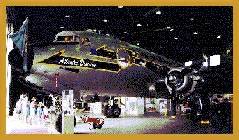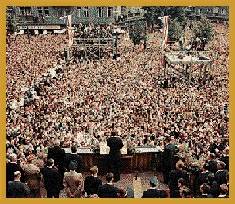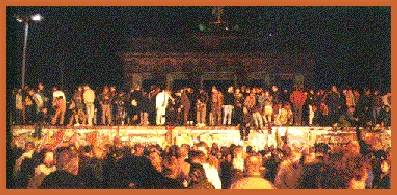|
PinkMonkey Online Study Guide-World History
17.3 The Cold War between 1947 and 1953
During this period, the Western Powers took action
to provide defenses against the spread of Communism. On August 15,
1947, the Rio Treaty or Pact, also known as the Inter-American
Treaty of Reciprocal Assistance for the maintenance of continental
peace and security, was signed at Rio de Janeiro.
The North Atlantic Treaty was signed in
Washington on April 4, 1949 by the United States, Canada, Belgium,
Denmark, France, Iceland, Italy, Luxembourg, the Netherlands, Norway,
Portugal and the United Kingdom. Greece and Turkey became its members
in February 1952 and West Germany joined it in 1955. In order to
achieve the objectives of the Treaty, the parties were expected
to maintain and develop their individual and collective capacity
to resist armed attack. The NATO (North Atlantic Treaty Organization)
aimed at strengthening the morale of Western Europe, and at halting
the Soviet expansion westwards. NATO proved to be effective, as
the Communists could not make any territorial gains in Europe or
in the Atlantic area, after April 1949.
A Treaty called the Anzus Pact was entered
into between Australia, New Zealand and the US in 1951, in order
to co-ordinate their efforts for the collective defense and preservation
of peace in the Pacific area. The Treaty aimed at keeping the Soviet
influence away from the Pacific.
On May 17, 1952, a Treaty was signed at Paris,
to establish the European Defense Community, containing provisions
for common political institutions, armed forces, budget and arms
program. On September 8, 1951, the Japanese-American Security
Treaty was concluded. The US agreed to maintain American forces
in and about Japan, (at the request of Japan) in order to deter
armed attack on the country.
The Berlin Blockade
After Germany surrendered in 1945, Berlin was divided
into four zones each controlled by one of the four Allies: USA,
Britain, France and Russia. The supposed reason for this division
was to completely disband Hitlerís Nazi Party. Germany being in
a miserable condition, the US, Britain and France went about re-constructing
their territories as per capitalist norms. The USSR followed the
communist pattern.
In April 1948, Russia closed all the roads through
which the Americans, British and French were supplying food, coal
and other goods to their special zones in an attempt to compel them
to surrender the former German capital to the Russians. However
the Western allies clung to Berlin. Supplies were brought to Berlin
by airplanes for one and a half years. In September 1949, Russia
accepted defeat and reopened the roads.

Exhibit 17.1
Essential articles being air-lifted to Berlin
Though the blockade was
lifted, it had serious consequences. Germany was left divided into
two in 1949. Later on, the USSR built a wall across Berlin to prevent
any relations between East Germany (the German Democratic Republic)
and West Germany (Federal Republic of Germany). This division of
Germany continued for forty years and ended, when the wall was broken
down (on 3rd
October, 1990).

Exhibit 17.2
President Kennedy addressing the Berliners at a public rally in
Berlin to boost their morale during the days of the blockade

Exhibit 17.3
The Berlin Wall comes down in 1990
The Korean War turned into a major confrontation
between the two super powers. In June 1950, North Korea invaded
South Korea. The UN Security Council called for a cease-fire and
for the withdrawal of North Korean troops. The US President Truman
sent American naval and air forces to give the South Koreans "cover
and support." Though the Korean War had begun between North
Korea and South Korea, it turned into a war between North Korea
and the US. By the end of 1950, it became a war between the US and
Communist China backed by the Soviet Union. The Chinese launched
an offensive against the positions under the command of the United
Nations.
An armistice was signed on July 27, 1953.
However, the Soviet and American troops continued to remain in both
the Koreas. The cold war hostility continued.
China also became a cold war territory. The Soviet
Union helped the Communists under Mao Tse-Tung against the Chinese
government headed by Chiang Kai-Shek. The American government gave
Chiang Kai-Shek military and financial aid. When the civil war was
renewed at the beginning of 1947, the tide turned in favor of the
Communists. Nearly all of North China fell to the Communists. In
1949, South China fell into the hands of the Communists, except
for the island of Formosa. Chiang Kai-Shek left the mainland of
China and retired to Formosa. Thus the Soviet Union won the cold
war in China.
[next page]
|